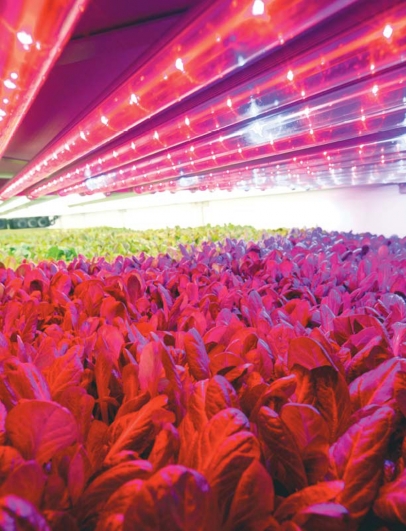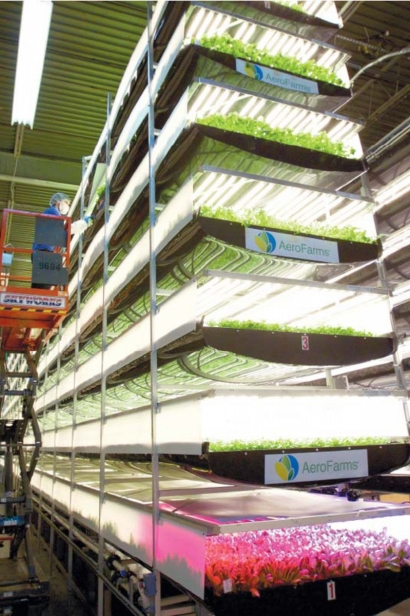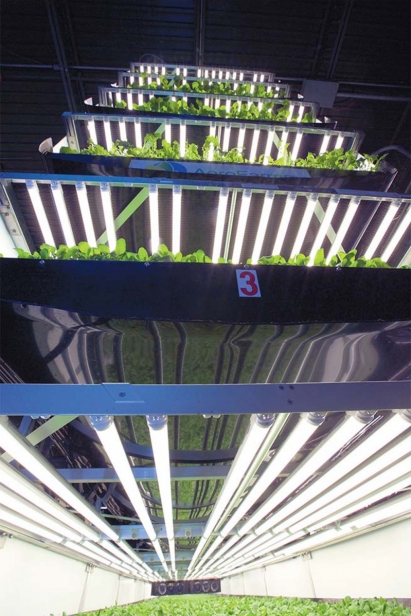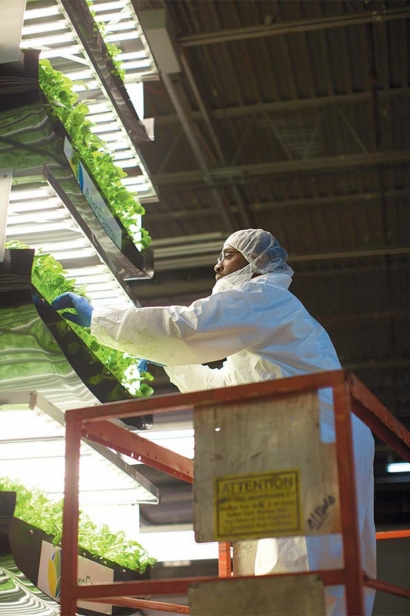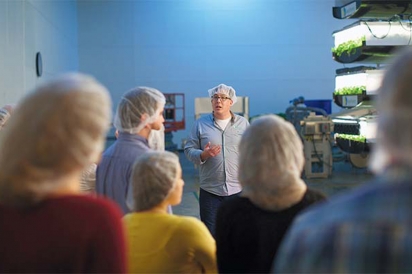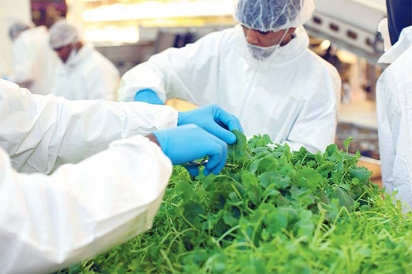Aerofarms: What They are and What's Next
After generating big headlines, this growing business looks ahead
AeroFarms, one of the country’s biggest players in sustainable urban agriculture, uses zero soil, zero pesticides and 95% less water than land-based farming. The mission- driven company harvests thousands of pounds of fresh greens each week from its 70,000-square-foot global headquarters in Newark, on just 1 percent of the land a conventional farming operation of similar scale would need.
The company has experienced rapid growth since its start in 2004, with projects now in development on four continents. In recent months, AeroFarms has received glowing press for its innovative growing technologies, data-driven approach, global viewpoint and high-quality, flavorful products from the likes of The New York Times, CBS and Reuters. The buzz has helped AeroFarms in its mission to bring vertical farming to communities struggling with climate change, food insecurity, overpopulation and food safety.
“This is a new way of growing. There’s no playbook,” says Marc Oshima, AeroFarms’ co-founder and chief marketing officer. The company has developed its own solutions for these questions: “How do you grow indoors? How do you grow year-round?”
To grow food without water and soil, AeroFarms developed a special fabric as a growing medium. In this system, plants’ leaves grow above the cloth, receiving LED light. The roots grow below and are misted with nutrients and water to keep them healthy, fresh and nutrient- dense. AeroFarms collects 30,000 data points on each crop to determine the perfect levels of light, water and food to give the plants, as well as when the time is right to harvest.
A core component of AeroFarms’ mission is to support local communities through jobs and engagement with urban agriculture. The Newark headquarters, located in a former steel mill, employs around 100 staff and can produce two million pounds of produce each year. Two other growing facilities in the city focus on production and R&D, and a miniature growing unit located in the dining hall of Newark’s Phillips Academy allows students to harvest their own greens for meals.
The question for AeroFarms, Oshima says, “is how do we have an overall movement? It’s not just about our own initiative, but really helping set a new stage [globally].” He estimates that the company will add around 25 growing facilities in the next five years.
At least for now, the excitement around Aerofarms’ value proposition— economic growth, fresh food and sustainable practices on a global scale—has created a supply-and-demand problem. The company receives calls daily about building vertical farms all across the world. “A challenge around this expansion is that there is so much unmet demand, because these pain points are becoming more acute every day,” Oshima says. With temperatures climbing and volatile weather patterns appearing in more and more areas of the globe, “a new paradigm is needed.”
To better support growth, he explains, they’re interviewing hundreds of potential candidates to staff new positions and getting involved with policy-making and other global initiatives: this year, AeroFarms has represented urban and vertical farming on the World Economic Forum’s agriculture committee and at the USDA’s Annual Outlook Forum. The company hopes not only to promote its own vision, Oshima says, but also to influence the major players in global agriculture—the likes of Monsanto and Syngenta—to prioritize sustainability, quality and community on a mass scale.
One upcoming step in that expansion plan that’s literally close to home is an AeroFarms project in under-resourced Camden, where the company has begun discussions with the city about a potential facility. While Oshima can’t put dates on the Camden project, he’s excited to say that something will be happening there “soon.”


